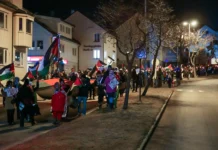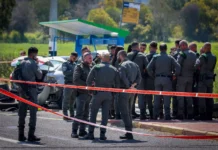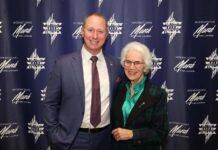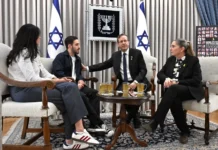Any newcomer to Jerusalem’s Old City learns that it is divided into four quarters: Jewish, Muslim, Christian and Armenian. Although there are no formal boundaries, and there is some intermixing of residents, it is evident that members of each group prefer their own neighborhood for the link to its religious identity and history.
I became intrigued with Jews who had chosen to live outside the Jewish Quarter. They belong to Ateret Cohanim (Crown of the Priests), an organization founded in 1978 that focuses on reclaiming property owned by Jews until the Arab conquest of the Old City during Israel’s War of Independence in 1948.
In nearby Beit HaMaaravim, the House of Moroccans built more than a century ago, we were welcomed by Raya, the first woman to move here. She said with a smile, “I volunteered to be the crazy one.” With her husband Danny, who had studied in the Ateret Cohanim yeshiva, they relocated to the Muslim Quarter. Raya wondered if they had made a mistake. Danny replied, “Jerusalem must be rebuilt.” She added, “When you believe in your way, you must go on with it.”
Escorted by a security guard, Hannah led me to the Galizia building, home to three Jewish families. A sign on the wall reads, “For the revival of Torah and Jewish settlement.” There we met Ettie, who insists, “There cannot be a ghetto in Jerusalem. Jews should live everywhere.” When she and her husband moved in, she recalls, the building was crawling with snakes and rats. But, like Zionists in pre-state Palestine, they persevered.
A similar story unfolded in Hebron, burial site of the biblical patriarchs and matriarchs and the first Jewish capital city in the promised land, where King David ruled before relocating his throne to Jerusalem. During Arab rioting in 1929 dozens of Jews were murdered and the Jewish Quarter was destroyed. After the Six-Day War in June 1967 a tiny group of Israelis was determined to restore Jewish life in Hebron. But the Israeli government prohibited their return lest it trigger another wave of Arab violence. Jews were restricted to the new settlement of Kiryat Arba, up the hill from the city.
The death of a 6-month-old baby prompted his parents to bury him in the old Jewish cemetery, closed to Jews since the 1929 Arab riots. But Israeli soldiers were ordered to block access lest Arabs be infuriated. After an hour of waiting his mother declared, “You have your orders and I have mine.” Cradling her dead child, she walked past them up the hill to the burial site. She explained, “God gave us our son for one reason. He had a job to do in his short life – to open our ancient graveyard. God has taken him back.”
Not long afterward Kiryat Arba residents decided to return to Hebron. In the middle of the night 10 women and their 35 children arrived at Beit Hadassah, the former medical clinic near the Machpelah burial shrine where the biblical patriarchs and matriarchs are entombed. Assisted by teenage boys they climbed ladders, cut wires to the windows and unloaded necessary supplies for a prolonged stay.
Once inside, the excited youngsters began to sing God’s promise that the children of Israel would return to Zion. When an astonished Israeli soldier came from his nearby post to investigate, he was told by a 4-year-old girl, “Jacob, our forefather, built us a ladder and we came in.” Hebron, a mother insisted, “will no longer be Judenrein.”
Once again, in Hebron as in Jerusalem’s Old City, women played a prominent role in the restoration of Jewish life in the ancient holy cities of the Jewish people.
Jerold S. Auerbach is the author of 12 books, including “Hebron Jews: Memory and Conflict in the Land of Israel.”

























